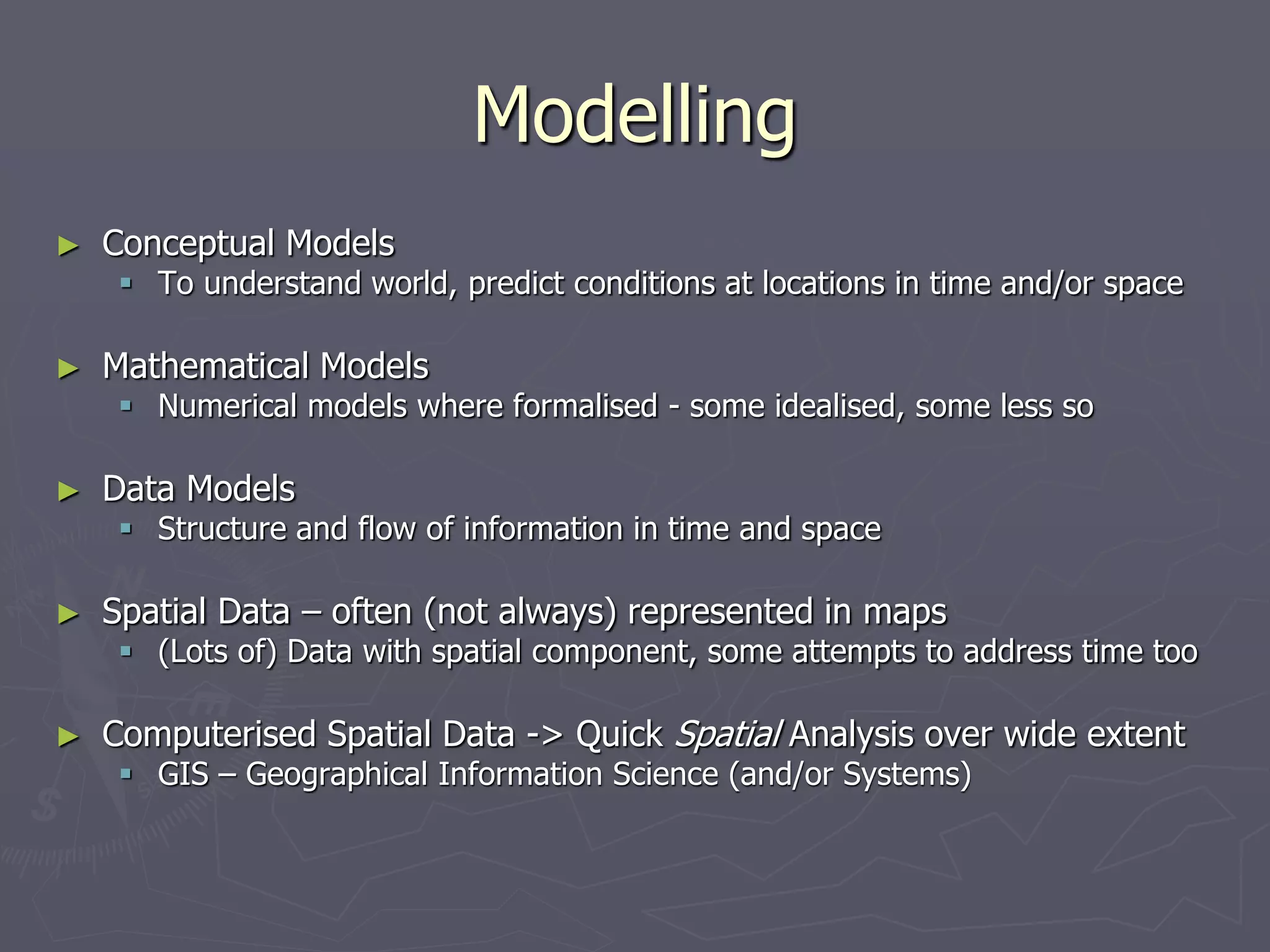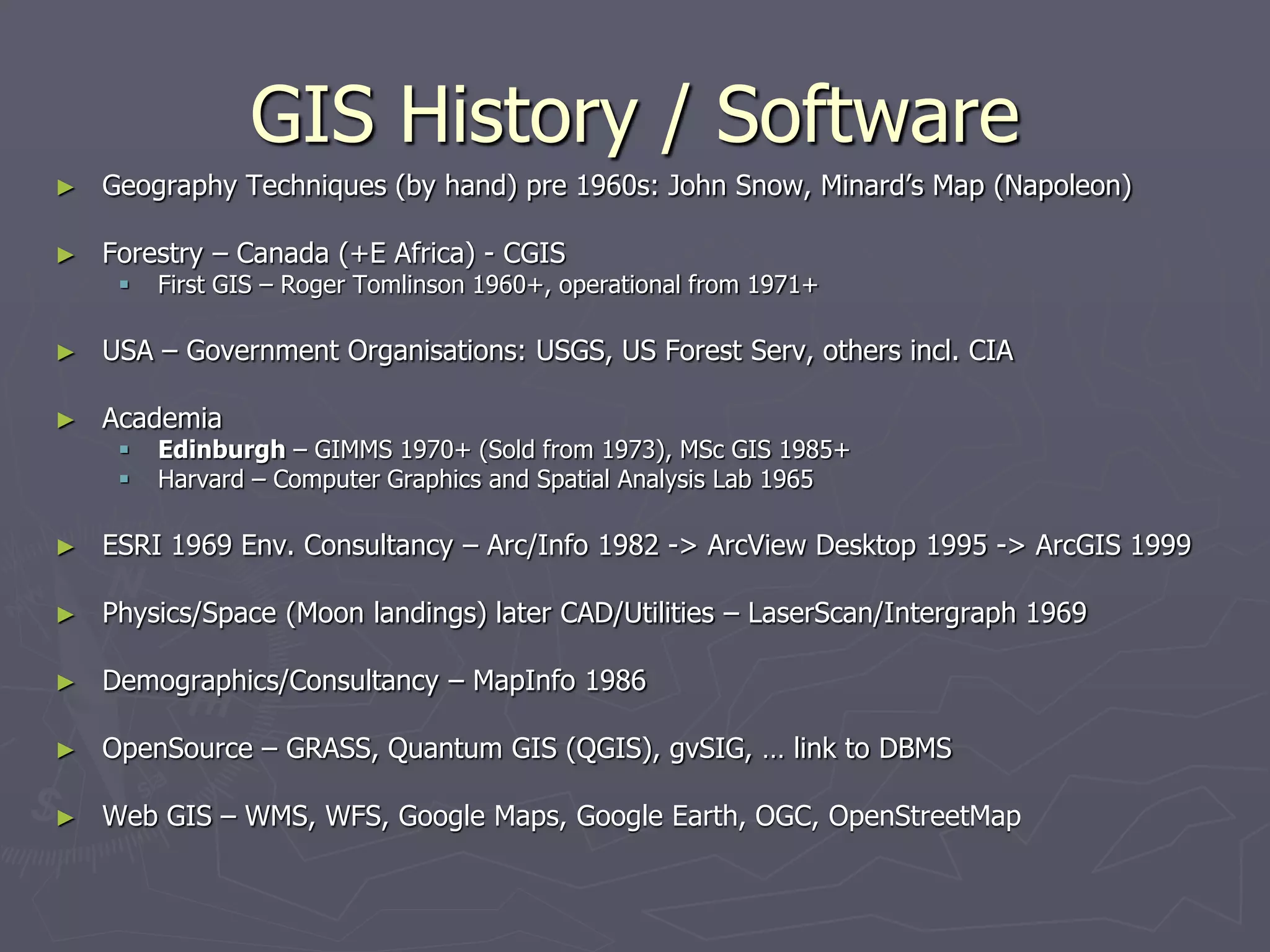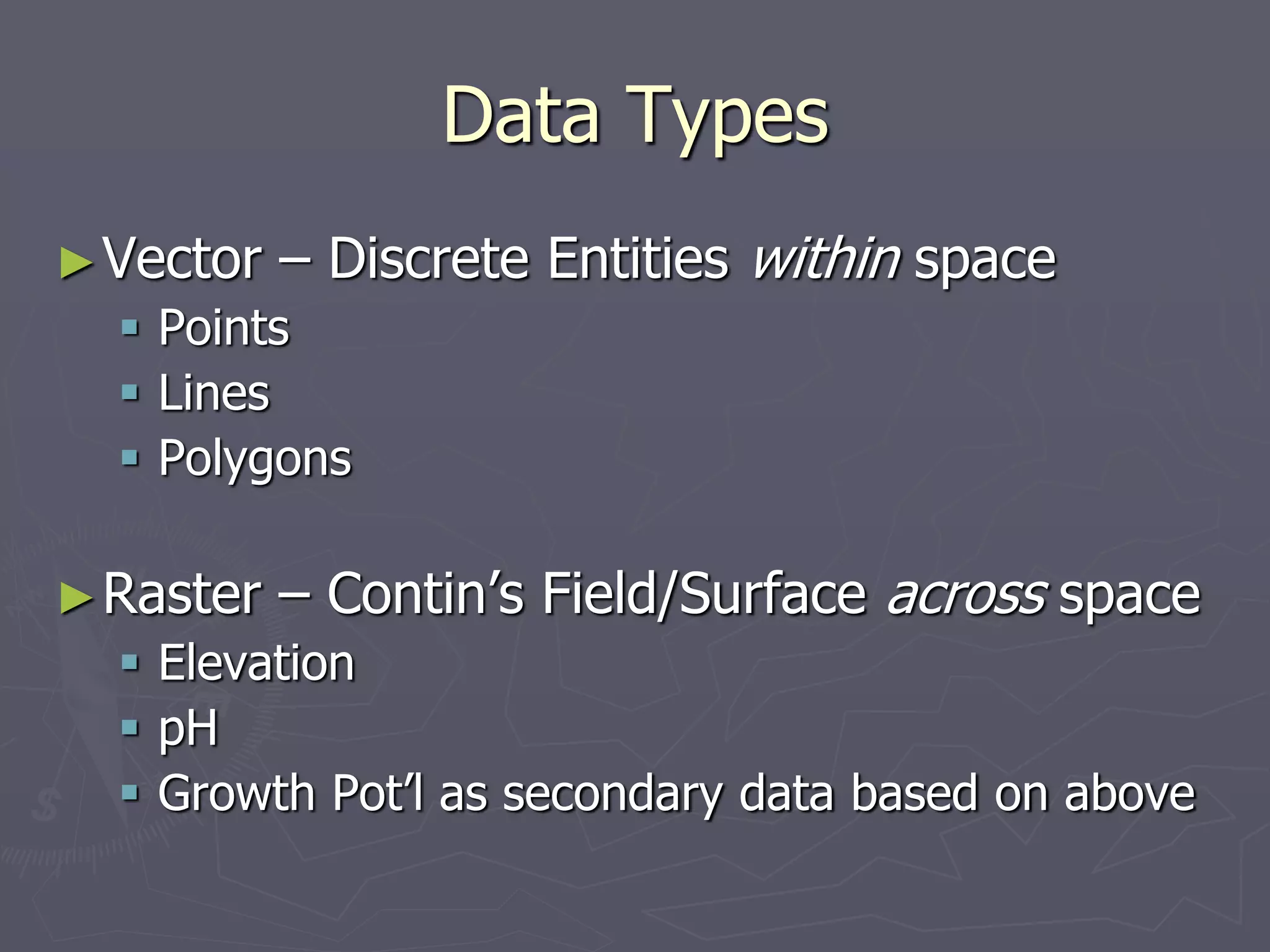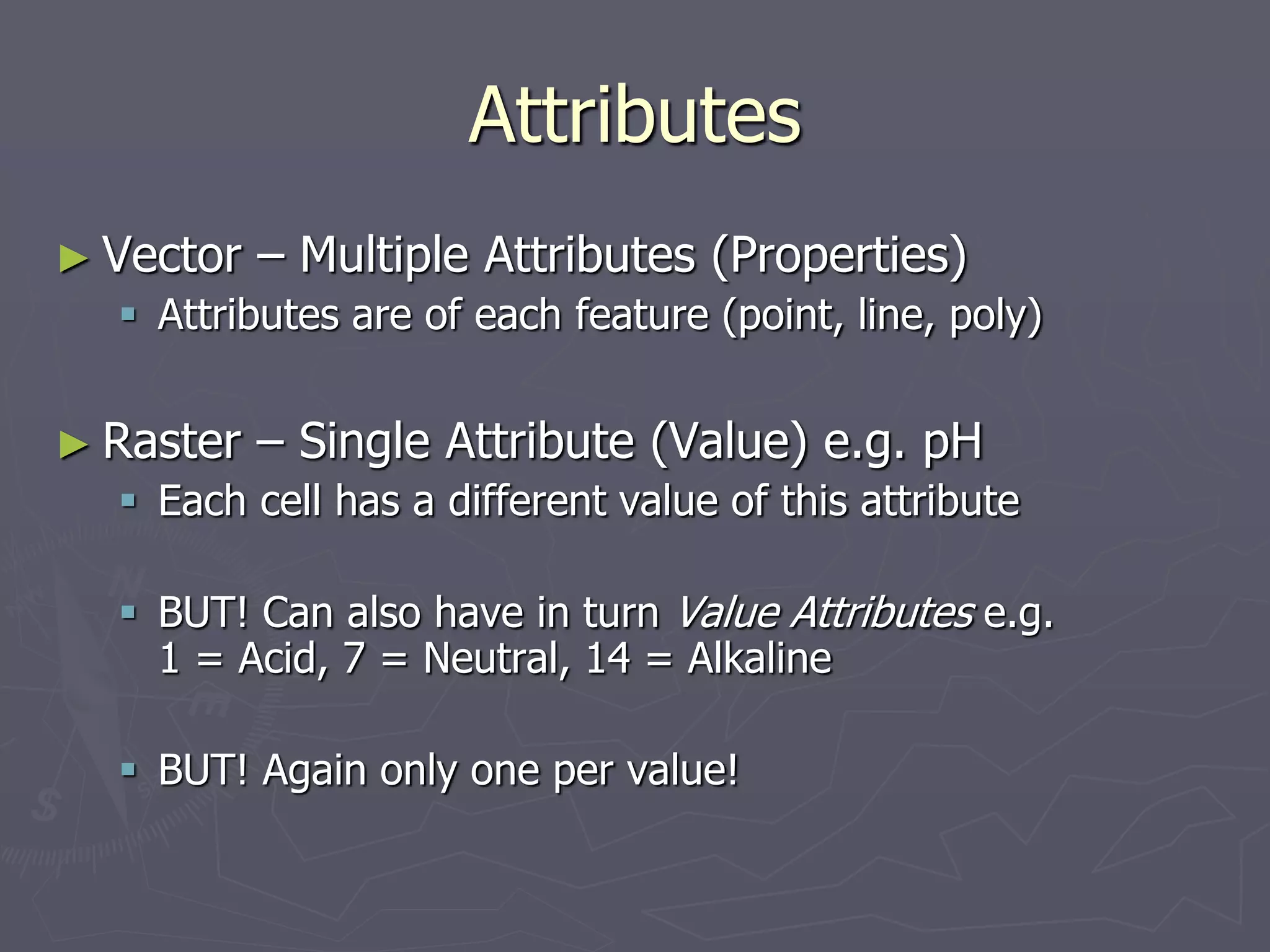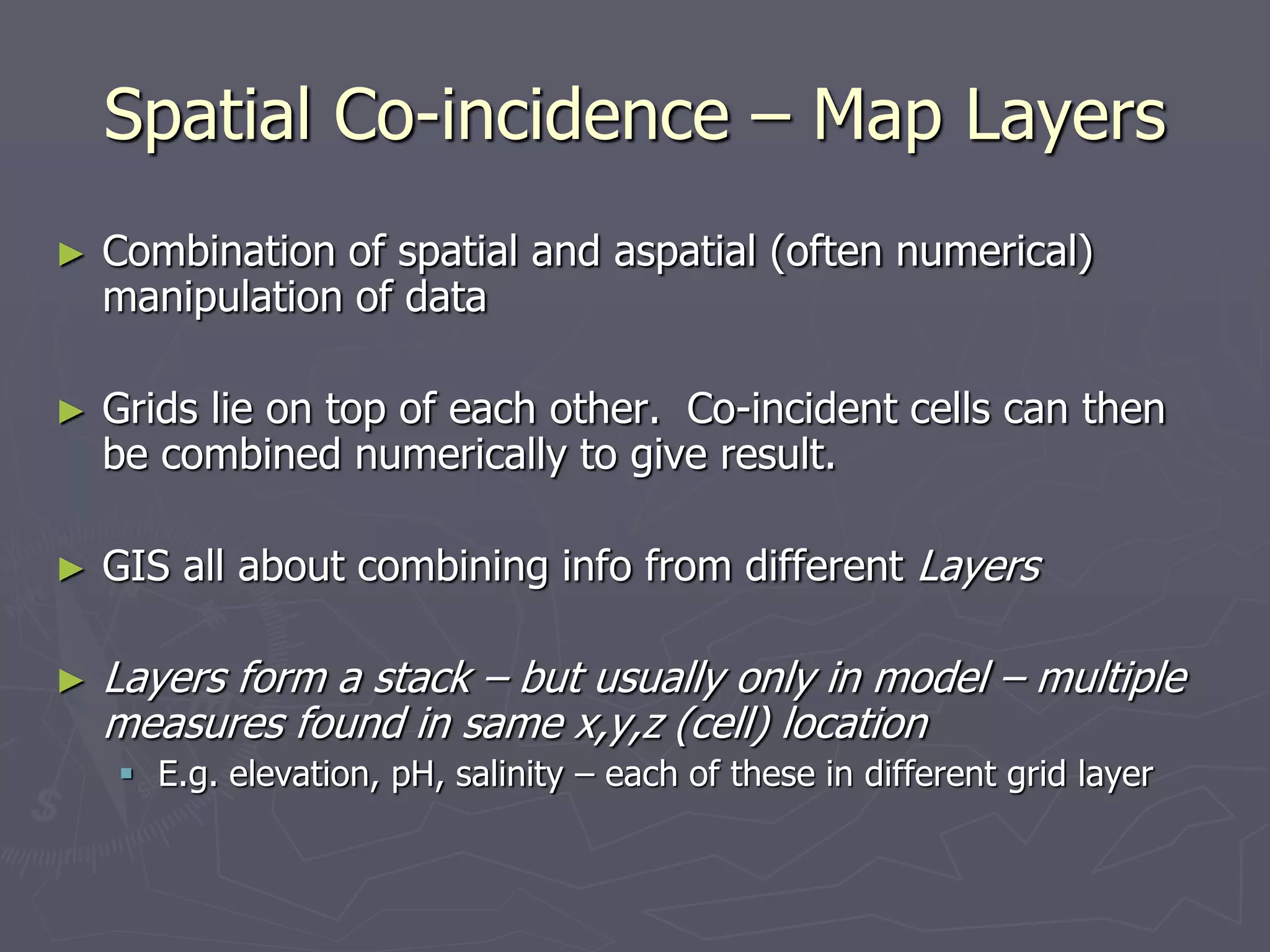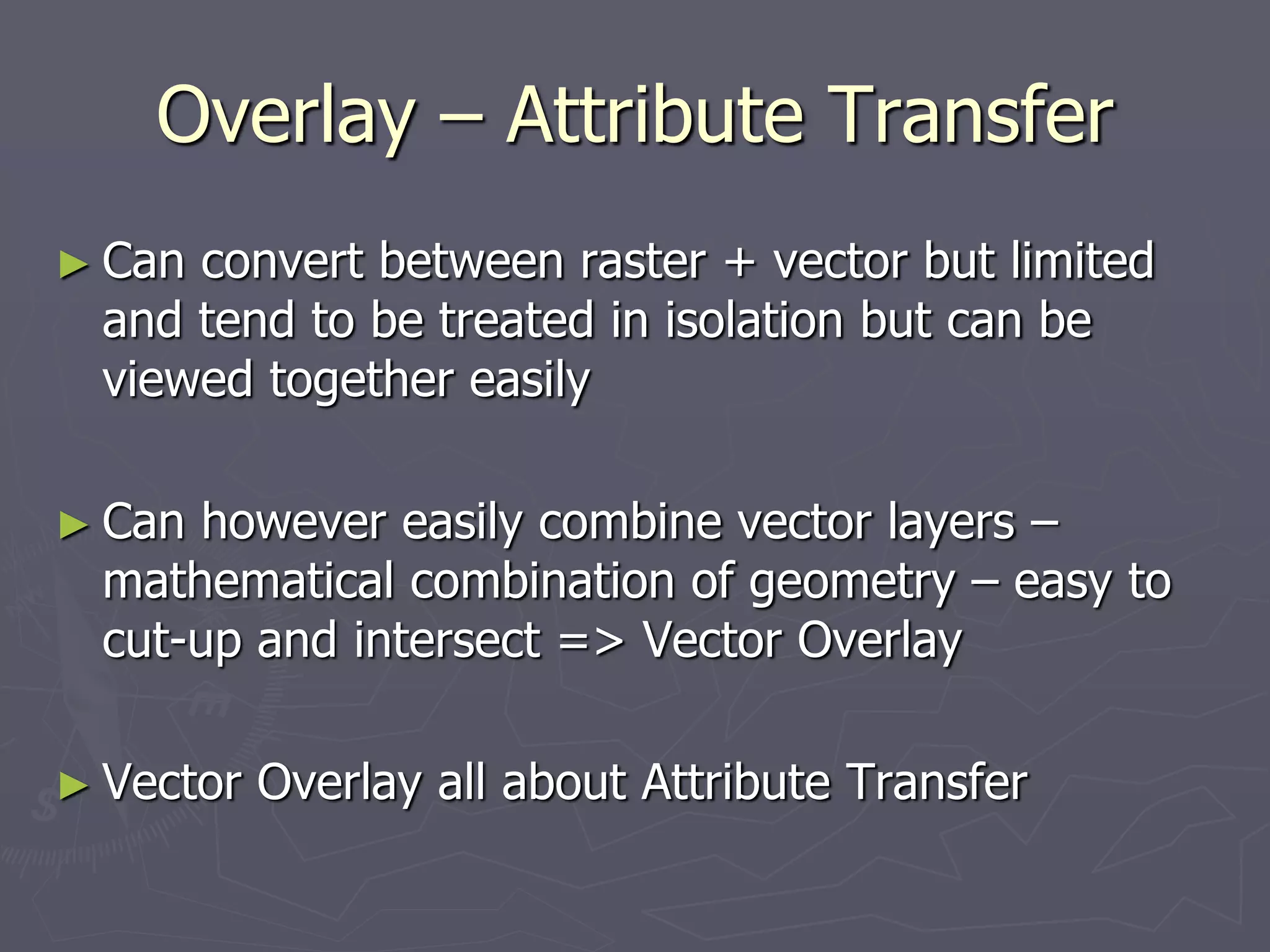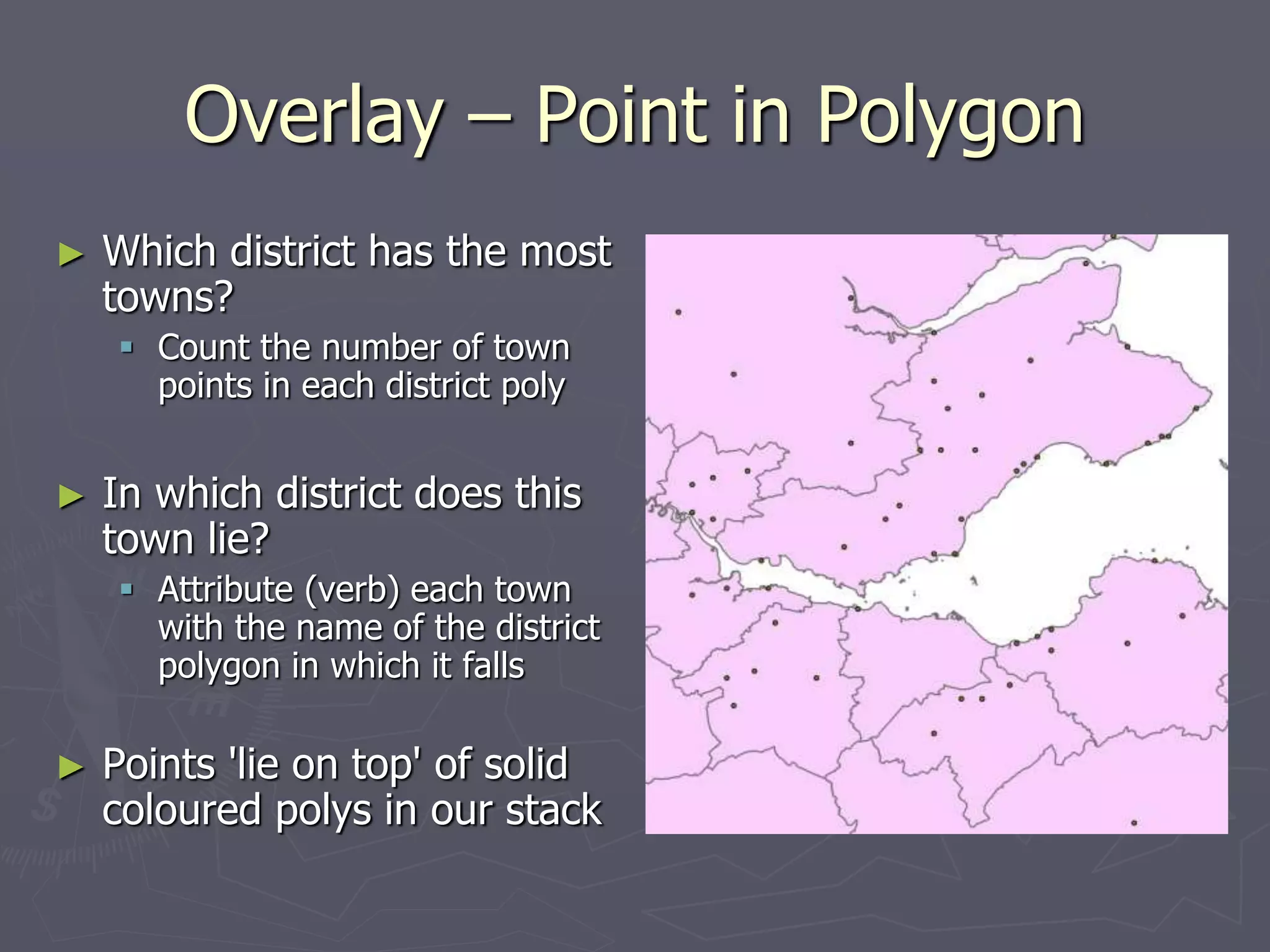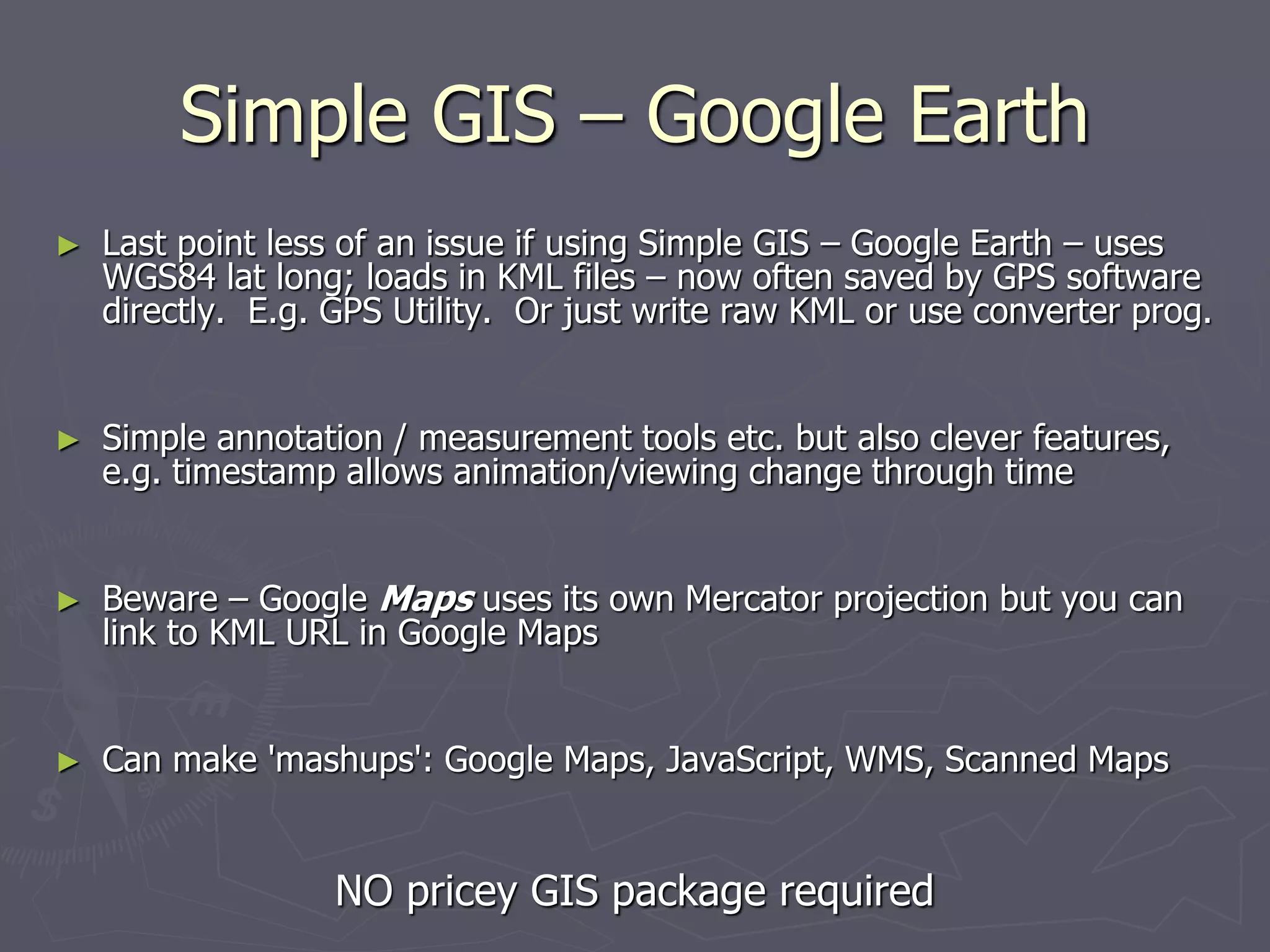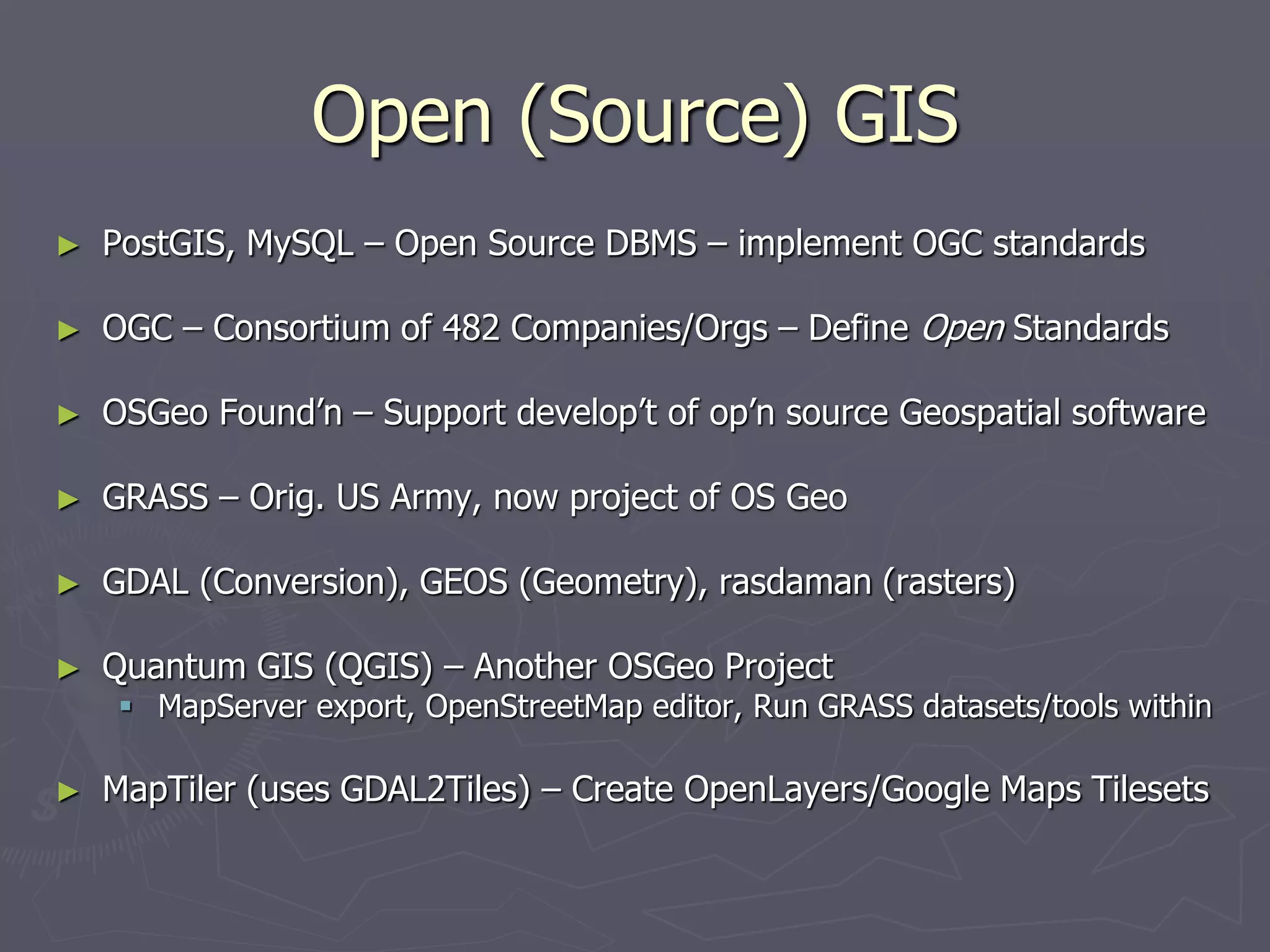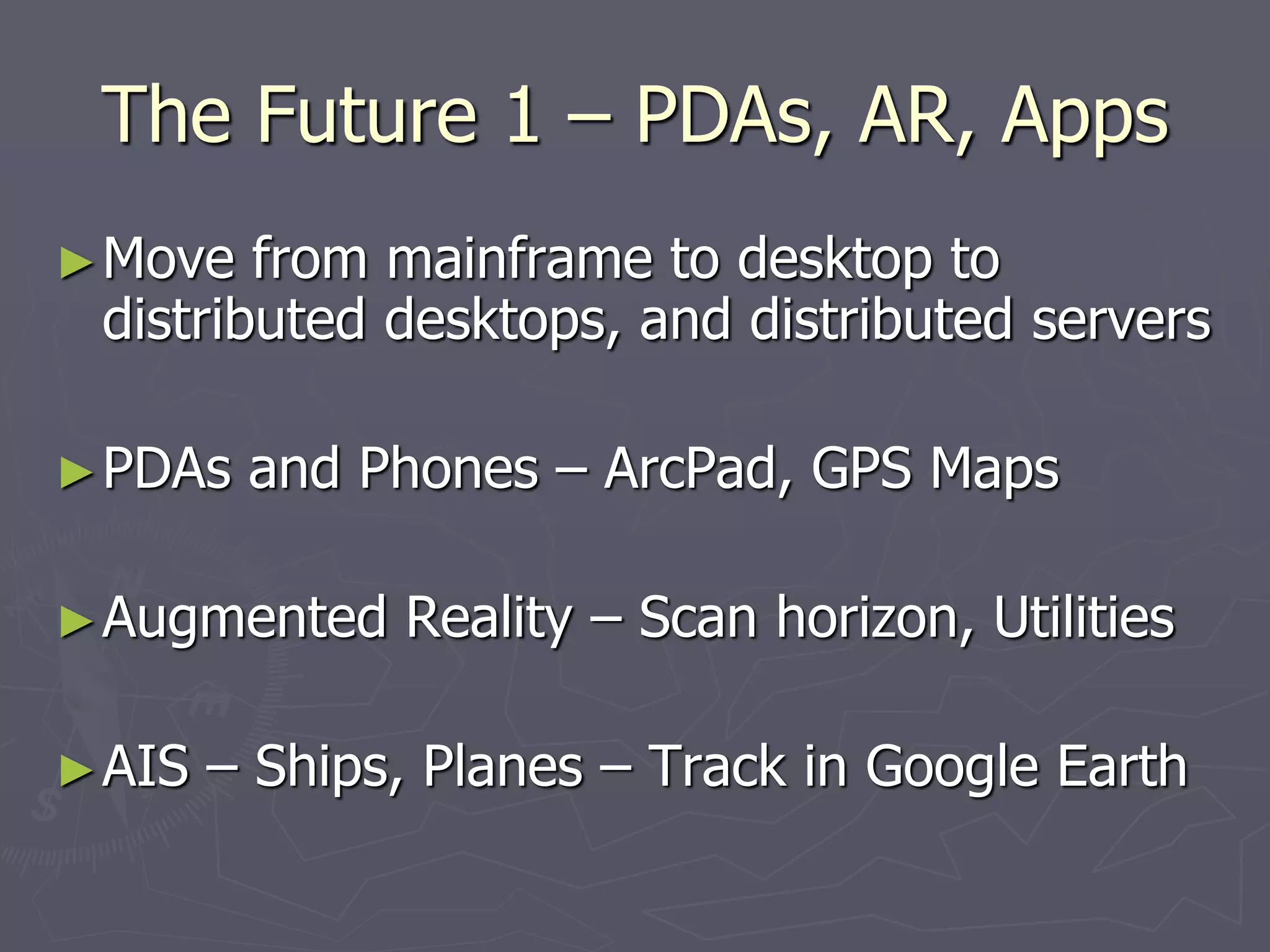This document provides a whirlwind tour of GIS concepts in 25 slides. It defines GIS as geographical information science and discusses data capture methods like remote sensing and GPS. It explains how spatial data can be analyzed and visualized in 2D and 3D maps. Common data types in GIS like vector and raster data are introduced along with concepts like attributes, overlay operations, and coordinate reference systems. Popular GIS software like ArcGIS and open source options are overviewed. The document concludes by discussing emerging areas in GIS like web mapping, mobile apps, sensor networks, and cloud computing.




